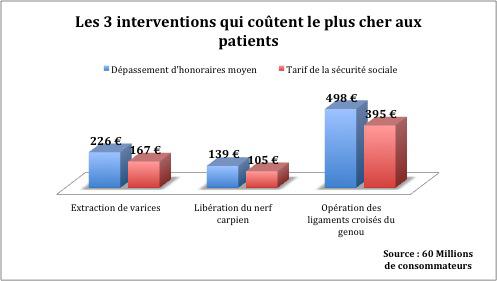After surgery in a clinic, more than 200 euros remain the responsibility of the patient, but the reimbursements of complementary will decrease on January 1.

What to panic the most robust budgets. Since 2011, fee overruns have jumped by 30% in French clinics. If prices explode, refunds do not follow. The year 2017 should hardly clarify the picture. From this 1er January, complementary health insurance will not cover overflows beyond double the rate set by Social Security.
A significant reduction which increases the remainder of the charge for patients. They have every interest in saving if they want to be hospitalized in the private sector: on average, they have to pay 214 euros. This is what the magazine shows 60 million consumers in its January issue, published on December 27.
Frequent overruns
This is not a coincidence of the calendar: the month of January is also the month in which the reimbursement of excess fees goes from 125% to 100% of the Social Security rate. The first supervision, within the framework of “responsible contracts”, had already aroused the discontent of the population. The latter should be no exception. Because reimbursements are falling… which is not the case for the prices of surgical interventions. Of the 10 operations most practiced in France, 7 cause an overrun of more than 100%.
Three surgical procedures are frequently exceeded: cruciate ligament surgery of the knee, implantation of a hip prosthesis and treatment of an enlarged prostate. Interventions which are nonetheless necessary. The three operations for which the amounts of excess are the highest are the extraction of varicose veins, the release of the carpal nerve and the operation of the cruciate ligaments of the knee.

Millions of euros
All cities are not in the same boat: it is in Paris that we pay the most, but in Lyon that overruns are the most frequent. Nationally, the cost of these overflows is numbered with several zeros. In clinics, more than 850 million euros are paid by complementary and patients each year. This is 10 times more than in the public sector.
.

















